This edition published in 2015 by Singing Dragon an imprint of Jessica Kingsley Publishers 73 Collier Street London N1 9BE, UK and 400 Market Street, Suite 400 Philadelphia, PA 19106, USA www.singingdragon.com First published in 2013 by Garuda Hellas, Thessaloniki, Greece Copyright Garuda Hellas 2013, 2015 Front cover image source: Veer All rights reserved. No part of this publication may be reproduced in any material form (including photocopying or storing it in any medium by electronic means and whether or not transiently or incidentally to some other use of this publication) without the written permission of the copyright owner except in accordance with the provisions of the Copyright, Designs and Patents Act 1988 or under the terms of a licence issued by the Copyright Licensing Agency Ltd, Saffron House, 610 Kirby Street, London EC1N 8TS. Applications for the copyright owners written permission to reproduce any part of this publication should be addressed to the publisher. Warning: The doing of an unauthorised act in relation to a copyright work may result in both a civil claim for damages and criminal prosecution. Library of Congress Cataloging in Publication Data A CIP catalog record for this book is available from the Library of Congress British Library Cataloguing in Publication Data A CIP catalogue record for this book is available from the British Library ISBN 978 1 84819 249 2 eISBN 978 0 85701 195 4 Dedicated to Swami Satyananda, Swami Niranjanananda and Swami Sivamurti for their continuous inspiration. A heartfelt thank you to Satyanandashram Hellas (www.satyanandayoga.gr), to Swami Aparokshananda and to Swami Jnanamudrananda for their generous service in the ashram kitchen over many years and for their valuable contribution and thoughtful guidance in the creation of this long-awaited cookbook.
This book is a practical demonstration of how one can do wonders with simple ingredients, not only in terms of taste, but also in regards to ones health, quality of thoughts and energy. The recipes in this book come from the Bihar School of Yoga, Munger, India (www.yogavision.net), which is our source, and from Satyanandashram Hellas, Greece, which has adapted some Greek-style vegetarian dishes for the yogic lifestyle. YOGIC COOKING  YOGIC COOKING The yogic diet is primarily a vegetarian one that also includes some dairy products, in particular milk, yogurt and cheese. It consists of plant-based foods that are wholesome and fresh, without preservatives and chemical additives. What are the benefits of such a diet? What do we gain when we include, for example, the combination of Sabji, rice and dhal in our daily eating habits? Dhal is legumes (usually split peas, red lentils or mung beans) cooked in combination with certain condiments, which help to accelerate the digestive process. Sabji is vegetables, also cooked with the same combination of condiments.
YOGIC COOKING The yogic diet is primarily a vegetarian one that also includes some dairy products, in particular milk, yogurt and cheese. It consists of plant-based foods that are wholesome and fresh, without preservatives and chemical additives. What are the benefits of such a diet? What do we gain when we include, for example, the combination of Sabji, rice and dhal in our daily eating habits? Dhal is legumes (usually split peas, red lentils or mung beans) cooked in combination with certain condiments, which help to accelerate the digestive process. Sabji is vegetables, also cooked with the same combination of condiments.
Seasonal vegetables are used as they are fresh, more readily available and better value for money. Meat-eaters object to an exclusively plant-based diet, claiming that we cannot derive the proteins we need from just eating fruit and vegetables. Our body needs amino acids to synthesize the protein. Most of the total amino acids the human body needs, 22 altogether, can be synthesized through the breaking down of food. There are, however, eight amino acids that the body is not able to synthesize and these have to be digested from certain foods that already contain them intact. People who eat meat, fish, eggs and animal products (milk, yogurt, etc.) are not deficient in these eight particular amino acids.
People who follow a yogic diet, on the other hand, need to consume a combination of legumes, cereals and vegetables, prepared with certain condiments, on a daily basis in order to take in this chain of eight essential amino acids. Since ancient times yoga practitioners have found that a diet consisting of fresh and cooked vegetables, combined with cereals and legumes and prepared using special condiments, is the ideal. Spices are not merely for seasoning and adding flavour they contain elements that are identical to the enzymes of the body and therefore help digestion. Some examples of these are: coriander, anise, cumin, mustard seeds, turmeric, black pepper and cardamom. An excellent example of a meal at the ashram is the combination of rice (grain) and dhal (pulse soup). By eating rice and dhal daily, we receive all of the eight essential amino acids.
Our body also needs vitamins and minerals. These we derive mainly from vegetables (cooked as sabji). It is important to consume a variety of vegetables so our body gets everything it wants and needs to maintain itself. When we decide to follow a vegetarian diet, we need to ensure that we get the necessary vitamin B12 and iron that our body requires. Another significant benefit of a yogic diet is that the food is digested easily. This is important because it means that we do not spend all our energy digesting; instead we are free to use our energy to create, to produce, and to live life to the full.
It is better to cook your food in the pot rather than in the stomach. The combination of temperature with the spices makes the food more digestible, so less energy is consumed during digestion. SWAMI SATYANANDA YOGA AND VEGETARIANISM The general impression is that vegetarianism is an integral part of yoga. However, yoga does not impose dietary restrictions on anybody; it simply proposes a nutritious, toxin-free diet. Yoga aims to cultivate physical, mental and emotional balance in individuals, so that they can experience the higher states of their being. This can be achieved with a balanced vegetarian diet that includes all the essential minerals and vitamins.
Diet is adjusted according to the season, our state of health and our activities. What and how much we eat depends on whether we sit for long hours in meditation or do dynamic asanas or a lot of karma yoga, or whether we are in full health or have a common cold, and so on and so forth. In every part of the world, everyone adapts their diet according to the prevailing climatic and geographical conditions. That is why the diet of those living in cold climates, such as Scandinavia and Alaska, contains more animal foods, while nearer the equator, where the climate is much warmer, lighter diets that are rich in vegetables and fruits are consumed. Archimedes and Pythagoras, along with other ancient Greeks, believed that vegetarianism brought peace and harmony to both the body and the mind, whereas meat-eating fuelled inner tension, producing disharmony and fervent obsession. Through much trial and error yogis came to the conclusion that some foods are unsuitable for the human body.
If you analyze the secretions of the digestive tract, the gums, the teeth and the secretions of the salivary glands, if you examine the strength of the mucous membranes along the length of the small and large intestine and make a comparison with other carnivores and animals that feed on raw nuts and seeds, you will see that there is a difference. The length of our intestines is evidence that the human body should consume cooked, vegetarian food. A natural, macrobiotic diet is ideal. SWAMI SATYANANDA It is not necessary to abandon meat-eating in order to do yoga. If you practise regularly, you will see that after a while meat will abandon you. I recommend a diet for your better health and to speed up your evolution.
You will see and feel the change at a physical level and you will also observe a mental alertness, a brightness and sensitivity. But it is not enough to stop eating meat. If you eat nutritious food and you use the increased energy for slander, cheating or lies, then it is wasted. It is better if a person has unhealthy eating habits but uses their energy for a good cause. Take care of your diet, control your speech, observe your thoughts. SWAMI SAYANANDA TYPES OF VEGETARIANS We come across vegetarians with different habits: Vegans: do not consume any animals or animal-derived products (milk, cheese, yogurt, eggs).
Next page
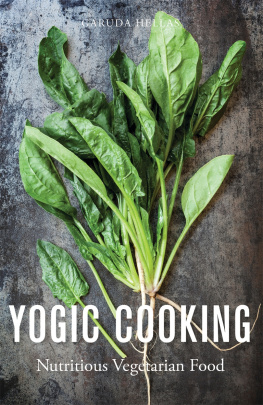

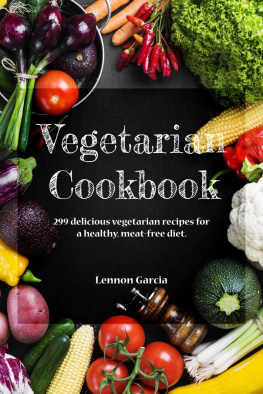

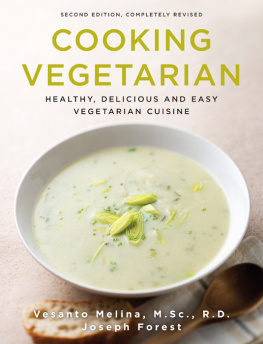
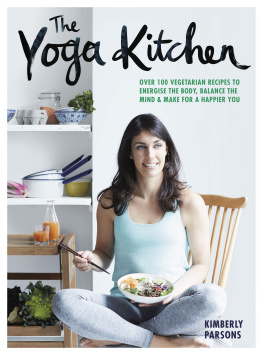
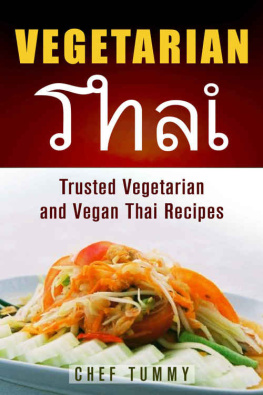
 YOGIC COOKING The yogic diet is primarily a vegetarian one that also includes some dairy products, in particular milk, yogurt and cheese. It consists of plant-based foods that are wholesome and fresh, without preservatives and chemical additives. What are the benefits of such a diet? What do we gain when we include, for example, the combination of Sabji, rice and dhal in our daily eating habits? Dhal is legumes (usually split peas, red lentils or mung beans) cooked in combination with certain condiments, which help to accelerate the digestive process. Sabji is vegetables, also cooked with the same combination of condiments.
YOGIC COOKING The yogic diet is primarily a vegetarian one that also includes some dairy products, in particular milk, yogurt and cheese. It consists of plant-based foods that are wholesome and fresh, without preservatives and chemical additives. What are the benefits of such a diet? What do we gain when we include, for example, the combination of Sabji, rice and dhal in our daily eating habits? Dhal is legumes (usually split peas, red lentils or mung beans) cooked in combination with certain condiments, which help to accelerate the digestive process. Sabji is vegetables, also cooked with the same combination of condiments.